Medication-assisted weight loss with a future focus
Start with Mounjaro, transition to habit-based health with our support

Recipes
Many meals can be included in a low-carb meal plan, simply by following the pattern of:
- Choose a protein (e.g. chicken, turkey, salmon or beef).
- Add ½ a plate of non-starchy vegetables (e.g. peppers, spinach or brussels sprouts).
- Include a small portion of healthy fats (e.g. avocado, seeds/nuts or olive oil).
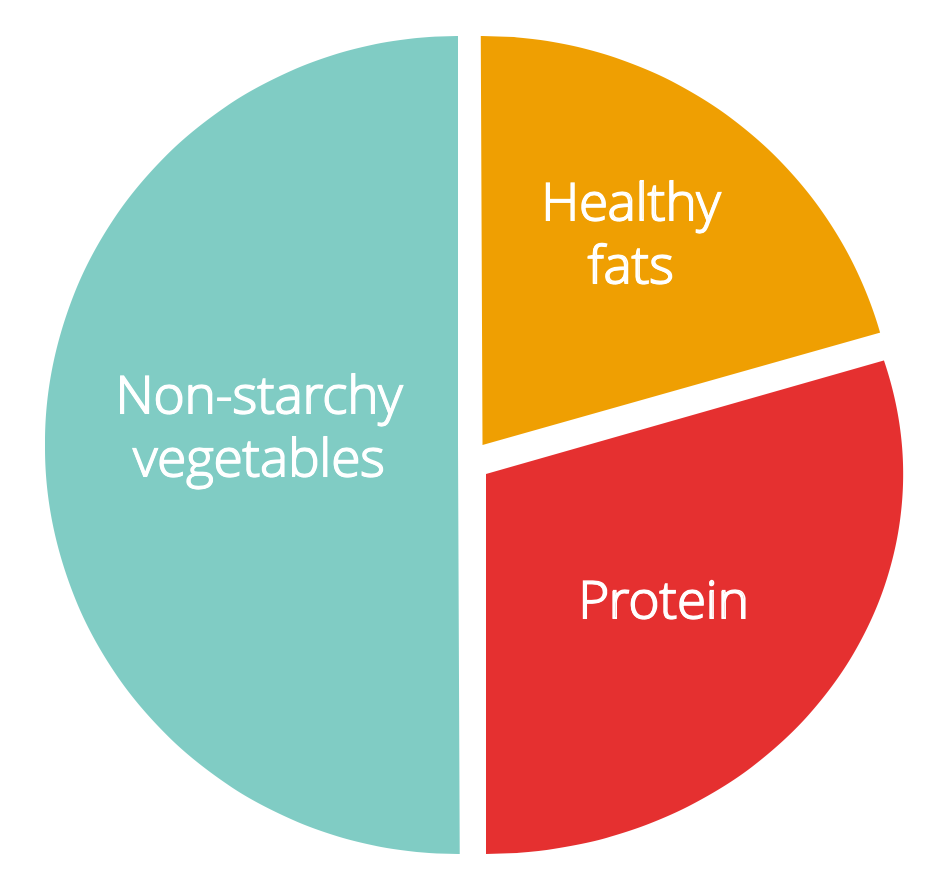
Note. Protein substitutes can be made for vegetarians, such as soy products, eggs or pulses. Beans, legumes, and pulses provide carbohydrate as well as protein, so be mindful of this – you may need to reduce the amount of other carbohydrates you choose in a meal with these.
Devised by our qualified nutrition specialists*, here are some easy low-carb meal ideas. All of these meals are naturally gluten-free and without refined substitutes. For full recipes and instruction videos, click on the images.
| Best low-carb recipes | |||
| BREAKFAST | Mini omelettes |
Shakshuka (baked eggs)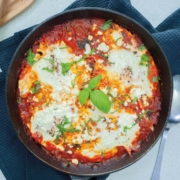 |
200g Greek yoghurt with berries and almonds 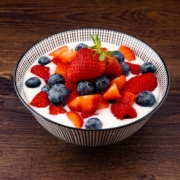 |
| LUNCH | Pesto chicken salad with butternut squash  |
Beef and broccoli stir fry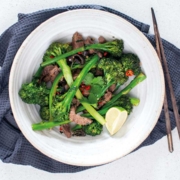 |
Warm lamb salad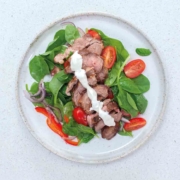 |
| DINNER | Cajun salmon and salsa |
Chicken fajitas bake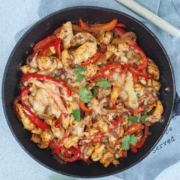 |
Meatballs in chilli tomato sauce 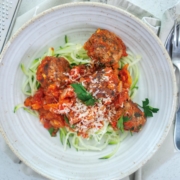 |
| VEGETARIAN | Cheesy aubergines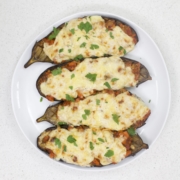 |
Coconut dahl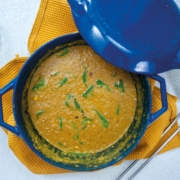 |
Moroccan stew |
*Second Nature nutrition specialists are all UK registered dietitians or nutritionists. This means they have completed university accredited degrees to gain this professional title. However, coaches are not registered in the US, so don’t meet the regulatory requirements to be considered US registered dietitians or nutritionists.
Easy swaps to make your favourite meals low-carb
Eating low-carb doesn’t have to mean sacrificing the meals you love. As with anything in life, slow and steady wins the race. If you start by making small changes you are more likely to stick with these changes in the long-term.
Making simple swaps for the carbohydrate element of your meal to low-carb foods is a good way to keep enjoying the food you love, while still reducing the carb content.
| CARB | SWAP |
| Rice | Cauliflower Rice |
| Spaghetti | Courgetti (spiralised courgette) |
| Mashed potato | Cauliflower mash |
| Noodles | Zoodles (also spiralised courgette) |
| Chips | Celeriac chips |
| Tortilla wraps | Lettuce wraps |
| Couscous | Quinoa |
| Roast potatoes | Roast carrots |
| Crisps | Kale crisps |
Difference between low-carb and keto
Although many of the recipes above can be used as keto recipes, a low-carbohydrate diet is not to be confused for a ketogenic (keto) diet. The more extreme keto diet almost eliminates carbs rather than aiming to reduce them.
This process deprives the body of its primary source of fuel, glucose. As a result, the body has no choice but to create new metabolic pathways and start burning fat (or more accurately, ketones produced from the breakdown of fats) for energy instead. This is called ketosis.
This may sound ideal, but while eating keto does burn fat, it is very difficult to follow effectively in the long term, as one slip up will take you out of ketosis.
There is no official definition of a ‘low’ or ‘lower’ carb diet. Research often uses many different classifications, but as a general overview, a lower carb diet is around 30% of your overall daily energy intake from carbs. This is roughly <100g of carbs (total) per day.
Practical tips on how to eat low-carb
When you do eat carbs, you should opt for complex carbohydrates (for example, sweet potato, oats, or wholewheat pasta). These have a larger molecular structure than simple carbohydrates (for example, white rice, white bread, or white pasta) and contain more fibre. Fibre makes us feel fuller for longer, and has many other health benefits.
If you are following a low-carb, balanced diet aim to have 1-3 servings of complex carbohydrates per day.
The following examples are one serving of complex carbohydrates and contain roughly 15g of carbohydrate:
- 80g cooked or 1⁄2 uncooked medium potato or sweet potato.
- 1 thin slice of wholemeal or wholegrain bread.
- 1⁄2 wholemeal pitta bread or bread roll.
- 1⁄2 wholemeal wrap.
- 20g uncooked or 50g (roughly 1⁄2 cup) cooked brown rice or wholewheat pasta.
- 20g raw wholegrain cereal, oats, or shredded wheat (approx. 1/3 cup); or 1 wheat biscuit.
Low-carb and weight loss
Carbohydrates are a large source of energy for our bodies and provide our cells with food (in the form of glucose). For those who are very active, eating plenty of carbohydrates is fine, but the majority of us live relatively sedentary lives.
This is a graph from a study comparing the effects of a low-carb, low-fat and Mediterranean diet on weight loss.
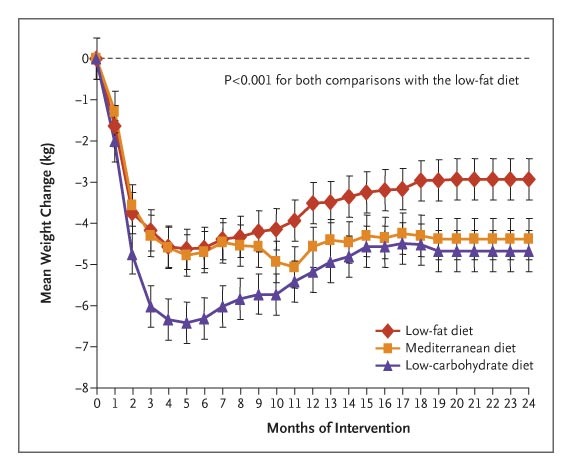
Cutting down on carbs resulted in the most weight loss out of all three groups. The significant difference in weight loss between the low-fat and low-carb groups was sustained 2 years on.
Low-carb diets contain more healthy fats and protein. We digest both fats and proteins more slowly than carbohydrates, which generally explains why they make us feel fuller for longer. This reduces the likelihood of snacking and feeling deprived.
By increasing protein and healthy fat intake and swapping some carbs for non-starchy vegetables, you will probably feel fuller while still consuming fewer calories.
Take home message
- Eating low-carb can be easy and doesn’t mean sacrificing the foods you love.
- Low-carb is different from a keto diet, which almost eliminates carbs completely.
- To eat low-carb you should aim for maximum 1-3 15g servings of carbs per day.
- Low-carb diets are very effective for weight loss.


